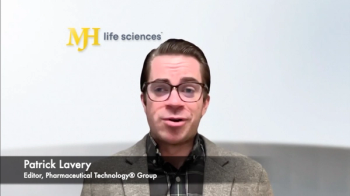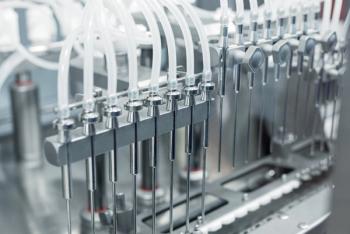
Proactive Asset Management Delivers Maximum Return on Investment
Ben Potenza spoke to Pharmaceutical Technology about the advantages of active asset management and how it can maximize a company’s return on investment.
As pharmaceutical and biotech businesses continue to grow, companies are investing millions of dollars in equipment and instrumentation to conduct primary research, move discoveries through to development, and ramp up to full production. “The result is a significant asset base sitting on the balance sheet,” noted Ben Potenza, vice-president of marketing at EquipNet. He further pointed out that when projects are completed, the emphasis of research shifts, or as companies merge, relocate or close facilities, equipment often fall out of use. The Investment Recovery Association (1) states that on average, 10% of a manufacturing company’s global asset base is lying idle at any one time. Most laboratory and process managers do not have good visibility of these assets. Ben Potenza spoke to Pharmaceutical Technology about the advantages of active asset management and how it can maximize a company’s return on investment (ROI).
PharmTech: What are the practical considerations on managing assets as research priorities shift?
Potenza: There have always been equipment dealers looking to buy surplus instrumentation as low as they can and then sell them for profit. In recent years, however, best practice in asset management has evolved away from this simplistic model; forward-thinking managers are becoming increasingly aware of the hidden value that is sitting in their facilities. But the pharma business is not principally about managing assets; naturally, the focus is on the discovery and development of the next important drug. Even when a manager understands the benefits of actively managing assets, pursuing a proactive strategy is not without its challenges. It requires formalized processes, specialist knowledge of the industry and its equipment, dedicated resources, and a concerted approach to change management. As many companies lack the time or resources necessary to implement such a program, they are increasingly relying on a partnership with a specialist service provider for successful delivery.
PharmTech: How do you qualify equipment for sale from a seller’s perspective?
Potenza: The first thing to consider is that, for any project, we need to ensure visibility of idle assets within a potential seller’s business, which then gives a company the option to redeploy surplus equipment-the strategy that always retains the highest value. Redeployment, however, cannot be successfully achieved unless there is some kind of central tracking platform installed within the company. Tracking is particularly important in a large, multisite, multicountry enterprise. Users should be able to post, track, identify, and internally redeploy equipment that is not being used in its present location. When looking at an asset redeployment management system, features should include a robust platform that sits behind a company’s firewall, a simple user interface that allows workflow management, multiple access levels for managers and executives across the business, and in-depth search functionality.
Where redeployment is not possible, a sale or disposal is the next logical step. The rise of the internet has seen the development of a number of websites that offer individuals the chance to list and ‘auction’ pieces of equipment. When considering an online transaction, however, particularly for a high-value and complex piece of equipment, the human touch from an industry expert who can properly assess fitness for purpose, provide accurate descriptions of items, and check provenance and history of use, is perhaps still the most important aspect of any marketplace. In addition, such specialists also have their eyes and ears open to what companies are looking to purchase. They can often broker a privately negotiated sale that delivers a higher sales price than an auction process.
PharmTech: How do you assess equipment for purchase from a buyer’s perspective?
Potenza: Just as sellers will now rely on specialists, potential buyers can also access industry knowledge and advice ahead of making a purchase. We always recommend that buyers do their research and ask questions. What has the instrument been used for? Has it been properly serviced? In addition, it is often possible to refer to reviews and opinions concerning a product from the time it was launched as ‘the latest thing.’
Integrating the purchase of premium pre-owned assets from other top-tier manufacturers, rather than always buying new, also boosts the ROI of an asset management program. In recent years, there has been a significant increase in major companies buying non-proprietary equipment from competitors.
PharmTech: Can you discuss the pros and cons of auction versus negotiated sales?
Potenza: From a seller’s perspective, the desire to recoup as much money as possible on a particular asset may, in certain circumstances, be superseded by time constraints. In this case, liquidity becomes the highest priority. There is always a balance to be struck between the (usually) higher prices realized from a negotiated sale compared to an auction event. Designing and managing a successful auction event depends on many factors. We advise on the right approach in each case; options might include a series of online auctions, a live or webcast auction event, sealed bid, and private treaty arrangements.
While commodity items may go straight to auction, other pieces may be initially posted for sale on the online marketplace. If time becomes a concern, these items can be sold at auction, although price expectations may be lower here, and reserve prices may be set at a lower level too. In our system, if an auction succeeds in generating a bid above the minimum, then the sale goes through automatically. However, if the reserve isn’t met, the seller has the choice of taking the highest bid or retaining the piece for a later auction. Once all avenues of profitable sale are exhausted, the equipment will be assessed for donation or valued for scrap.
PharmTech: Can you give us an example of how asset management can provide strong return on investment for companies?
Potenza: A major pharmaceutical company approached EquipNet to help close a section of its R&D laboratory facility, meaning an entire site needed to be cleared of all company assets. Everything was catalogued and photographed, and fair market valuations were established for each item. Assets were then listed on a secure, company-specific software platform so that the organization’s 170 facilities across the globe had full exposure to the items available. Due to tight time restraints, the equipment was simultaneously advertised online. Items that were not redeployed or sold through the managed price approach were put into web-based auctions.
In this case, the company was able to redeploy 10% of the items, thus avoiding unnecessary purchase of new equipment. The redeployment equated to a cost saving of more than $200,000. A further 64% of the items were sold, while 20% of the items held no resale value and were scrapped. The location was cleared within the allotted timeframe and the company maximized the return on its original investment in those assets, all without interrupting ongoing operations.
Reference
1. The Investment Recovery Association (2014) The Missing Link of the Supply Chain: How Professional Surplus Asset Management Increases Procurement ROI.
Newsletter
Get the essential updates shaping the future of pharma manufacturing and compliance—subscribe today to Pharmaceutical Technology and never miss a breakthrough.





